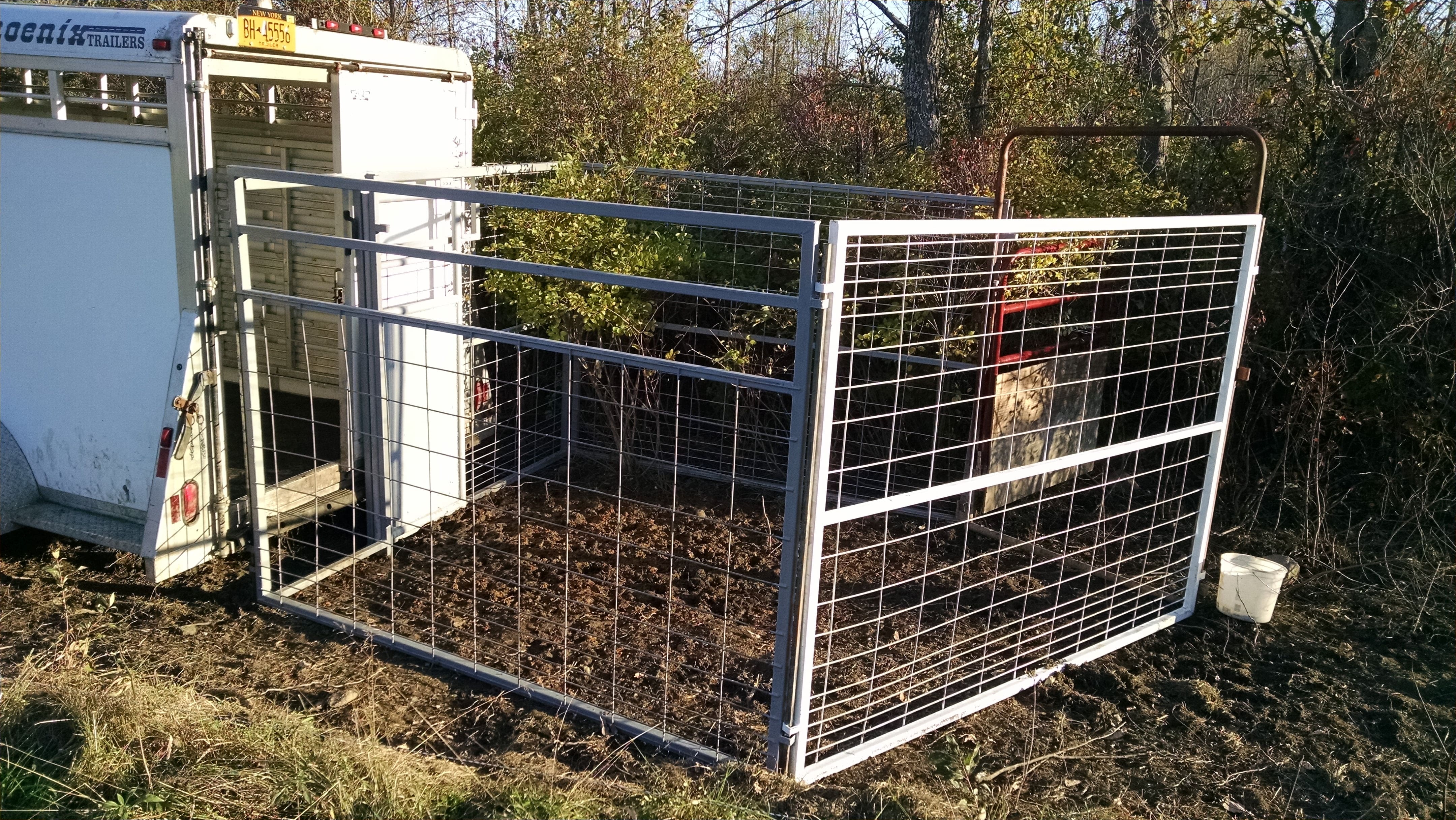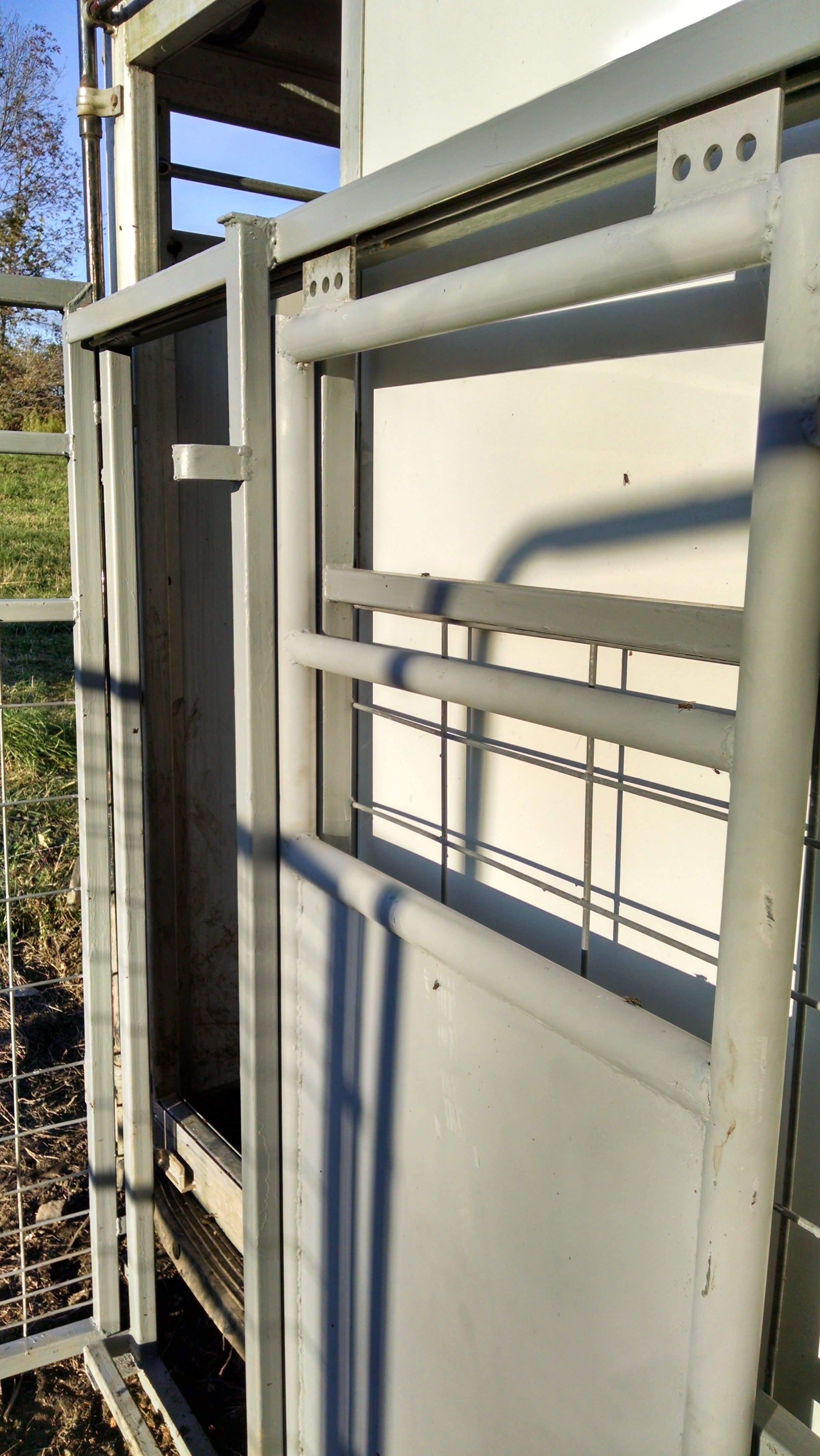Raising pigs on pasture eliminates the need for a lot of fancy, costly infrastructure, but it occasionally requires specialized equipment particularly suited to our situation. Since we aren’t doing all-in, all-out groups of pigs, we need to sort groups from time to time, removing a few pigs for transport to the butcher, separating piglets for weaning, or transferring gilts to the breeder herd. In the past we’ve used various methods with various success, but we’ve found there is nothing like a strong corral to make the handling experience calm and easy for the pigs and for us. We have a sorting corral back at the winter yard, but that’s nearly three quarters of a mile from where our pigs are grazing now, making the work of herding the pigs back and forth a daunting proposition. We decided to build some portable corral panels. Over the years we have made do with wire panels and t-posts, but we wanted something that didn’t require so much staking, tying, or fiddling. Wire panels usually work, but occasionally a pig spooks when it notices that it is enclosed, an in the ensuing panic it can break or even jump over 50 inch fences. We have found that if we use more substantial fencing the pigs realize immediately that they can’t escape so they don’t panic, tearing up equipment and injuring themselves.
Having calmer pigs is a big deal. Our customers are looking, among other things, for a humane alternative to industrial pork, and we want to make sure that the reality matches their expectations. Humane handling is one of the places where small farms, due to short-handedness and a lack of capital for infrastructure, often fail to live up to their image as peaceable kingdoms. But this isn’t just an important upgrade for the pigs or for the customers. It is hard to convey to anyone who hasn’t worked with a freaked-out 250 pound pig just how stressful it can be for us to try to sort, corral, and move pigs without adequate equipment. I look at this investment in equipment also as an investment in our mental and physical well-being. Unless you’ve experienced the chaos of herding gone wrong, it is impossible to describe how much better it is to be able to quietly close a gate, to slowly position yourself to put just the right amount of pressure on a pig, and then to have that pig hop right into the trailer without a fight or a squeal.

Our new panels are eight feet long and almost six feet tall. They interlock with steel rods hammered into the ground at the corners. The panels are heavy enough to withstand rooting, jostling pigs, but not so heavy that I can’t lug them around by myself if needed. With two people, installing the panels is a breeze. We started with a design that used two 34 inch hog panels on top of each other, but the design we ended up preferring is a panel that has a 50 inch combination panel at the bottom and an extra cross bar blocking the top. This redesigned panel requires less welding and is a little bit lighter. The other change I made as I went along was to decrease the square tubing thickness from 11 gauge to 14 gauge. I think the lighter material offers a better compromise of strength versus cost and weight.

